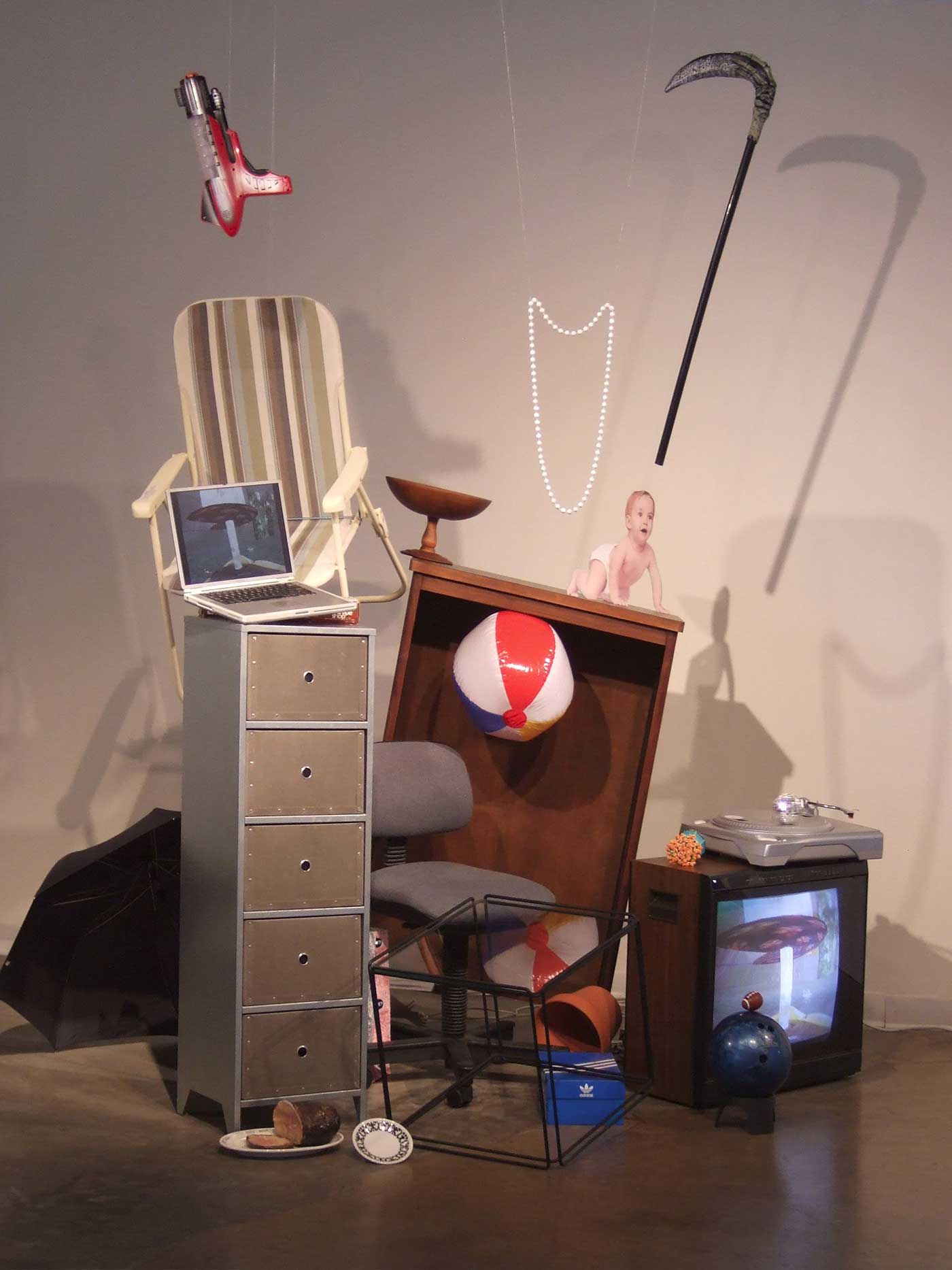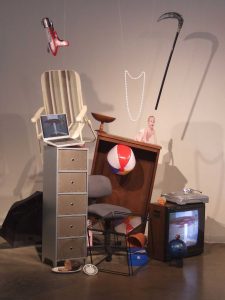Conduit Gallery, Dallas, Texas as part of THE PROGRAM,
organized by Carolyn Sortor Bart Weiss, and Charles Dee Mitchell,
dump management by: Carolyn Sotor
RL Dumpster installations in galleries and museum spaces were an extension of our online project “Second Life Dumpster.” We used these public dumpsters to learn more about the relationship between and object based art production and consumerism, ideas of “market value,” actual strategies of object recycling and creating a participatory public sculpture. For the installment of these dumps we sent curators and museum staff a set of general guidelines that laid out how to assemble a RL Dumpster in their exhibition spaces. The guidelines were shaped by our experience of having maintained a virtual public dumpster for one year in Second Life, and mainly concerned the collection (source from as many people as possible,) the kind (clean, colorful consumer objects and glossy packaging) and installment (try to ignore the notion of gravity and weight) of trash objects. As a reference, the installations also included video clips that showed the process of virtually decaying objects on the SL Dumpster. To get feedback on the process we invited RL Dump Managers to send us a dump report.
Dump Report
On Sep 15, 2008, at 7:27 PM, Carolyn Sortor wrote:
The only thing we purchased for our tower of trash was the beach ball. Most of the “trash” came from my house; but we found the brown wooden bookcase-with-no-shelves by the roadside; and AC and Danette also contributed several items.
Once I got your more detailed written explanation of the nature of the trash and the decay option, and after getting to actually look around a bit in 2L and the Dumpster with AC’s help, I felt I had a better idea of what to look for. E.g., in the Dumpster I saw various “parts” of partially-decayed objects — textured or colored, now-abstract shapes hanging in the air — and it seems to me it would have been fairly easy to cut up some boards or gatorboard and spray-paint them or maybe cover them with some kind of patterned paper, and hang a few of those from the ceiling.
On the other hand, it may have been just as well not to try to include “decayed” physical objects, since I think that might have been confusing. Even as it was, the whole thing needed explanation for people to appreciate everything; but we were happy to stand around and tell people about it, because we thought it was so cool. Still, I like the idea of an assemblage of trash similar to the one we made but with a few bright red boards floating through the middle.
I found it interesting to think about the differences/similarities between the decay of 1L objects and the decay of objects consisting almost entirely of information, among many other interesting aspects . . .
Here‘s where some of the “virtual virtual” objects we used in our tower live now (in their “native” setting back at my house):

